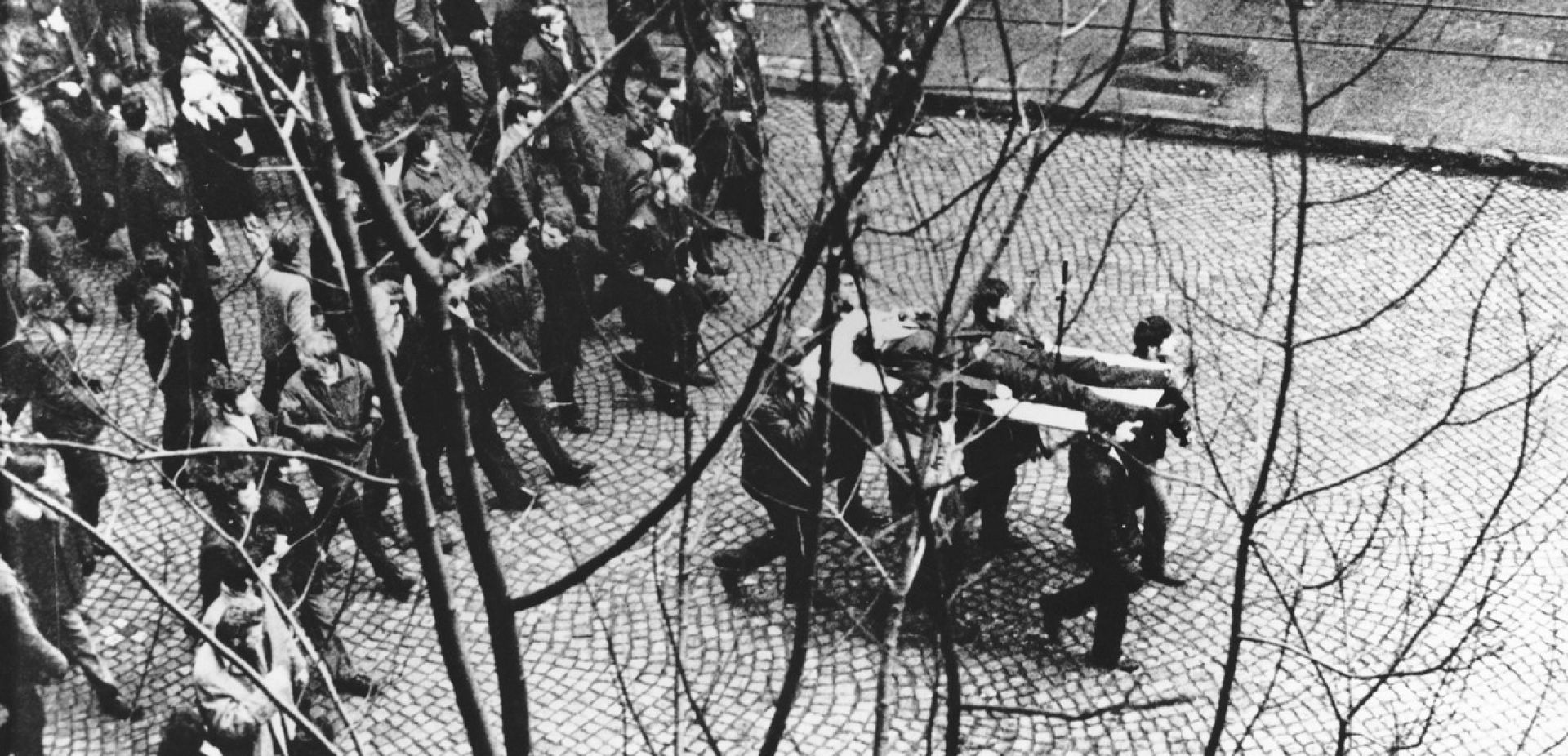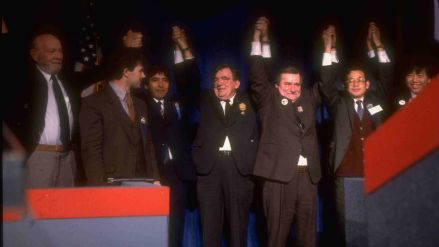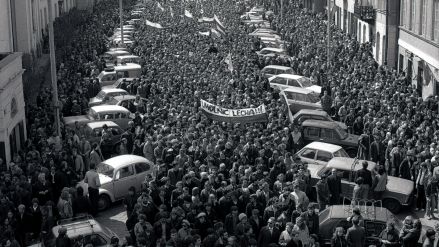The funerals of those killed in the "Wujek" mine had similar proceedings, with the only difference that several victims were buried far from the Silesian region, in their home towns. But why was an open funeral organised for the victims from Poznań, but those killed in December 1970 were buried at night?
Well, the bloody suppression of the Gdynia city demonstration of December 17, 1970 had a major impact on such behaviour of the authorities. Then the manifestation turned into a symbolic funeral procession carrying the dead shipyard worker on the door platform.
Even a stronger accent in history was made by the death of Stanisław Pyjas on May 7, 1977 in Krakow. Then, a 24-year-old opposition activist, a Polish philology and philosophy student at the Jagiellonian University, died in unexplained circumstances a few days before the Juwenalia annual students’ events. He was found dead in a tenement house at 7 Szewska Street. The authorities insisted that his death must have been caused by falling down the staircase.
The Pyjas’s death caused the so-called Black March and mass student demonstrations. In the evening of May 15, 1977, at the end of the manifestation, a declaration was read out in front of the Wawel Castle, establishing the Student Committee of Solidarity in Krakow - the first organisation of this kind in Eastern Europe - and calling for the disclosure of those responsible for crimes. Investigations conducted from the 1970s to the present day point to a fatal beating, most likely by SB officers who were reported on Pyjas by his colleague and later SKS activist, Lesław Maleszka. However, the matter is still not fully clarified.
It is also worth recalling two other very similar funerals, although they were separated by over 40 years. One from the beginning of the Polish People's Republic era and one from its end.
Maria Tyrankiewiczówna, a student at the University of Lodz (Uniwersytet Łódzki), was murdered on December 14, 1945. All the Łódź city residents pointed to the Red Army soldiers as the perpetrators of the crime. The funeral was organised by students from “Bratnia Pomoc”, to whom the militia did not want to release the body from the mortuary. Two thousand students gathered in front of the morgue and forced the functionaries to release the corpse. “A spontaneously formed procession began to move silently along the city’s main streets. In complete silence, students carried on their shoulders a white coffin with the corpse of a friend. On the way to the Church of Our Lady in Nowe Miasto, they borrowed a mourning cross and two black banners. And so (...) they reached the academic church,” – wrote Father Tomasz Rostworowski. The next morning, after the service, the 6,000-strong procession set off, but not along the side alley routes, as ordered by the authorities, but along the main streets of Łódź. Before entering the cemetery, a military cordon separated the head of the procession with the coffin and wreaths from the rest of the crowd.
It was only after the funeral that serious events took place. Windows in the editorial office of "Robotnik" were broken, and young people returning from the funeral sang "Rota" with changed words: "... until the Soviet turmoil disintegrates into ashes and dust." At night, the UB functionaries (the Office of State Security) arrested about 1,500 people, mostly young ones. The press wrote about the students as those who wanted to bring "the worst habits of the so-called golden youth, i.e. a razor blade, a club, knuckledusters", and the funeral of this young
student was used for "brawling purposes". In connection with this event, an imminent "expulsion of the young masters" was announced.
Many years later, on November 2, 1986, after 13 days of fighting for his life in rather mysterious circumstances (it was suspected that he had been beaten by the militia), a student of the University of Gdańsk
Marcin Antonowicz died in one of the Olsztyn hospitals. The authorities expected the funeral to be attended by a large number of people and tried to force the family to hold it 5 kilometres away, outside of the city. This failed, but the obituaries published by the local press did not mention the date and time of the ceremony.
The burial drew a ten thousand crowd anyway. There were students from Gdańsk, academic chaplains from the Tri-City and Olsztyn, and even two bishops arrived. ABC and NBC American TV stations filmed the funeral ceremonies. The authorities placed 15 city buses in front of the church, which really surprised the funeral participants. However, the Gdańsk students, after leaving the church service, took the coffin over their shoulders and went down with it to the cemetery. Above the grave, a letter from Lech Wałęsa was read out. He could not come along to the funeral because the prosecutor's office did not allow him to leave Gdańsk due to the ongoing investigation against him. The chairman of Solidarity wrote: “This death is completely absurd. It touched the late Marcin when he was at the hands of those whose elementary duty was to protect the safety of citizens. Once again, it has been confirmed that the functionaries of the Ministry of Internal Affairs in Poland operate above the law and with a sense of complete impunity.”
The sad point of all these stories is that, despite the system’s collapse, the perpetrators of communist crimes remained largely unpunished.
Third Polish Republic was unable to hold them accountable. And if it had happened, it would have been far from satisfactory.
-Grzegorz Sieczkowski
TVP WEEKLY. Editorial team and jornalists
–Translated by Katarzyna Chocian 

 SIGN UP TO OUR PAGE
SIGN UP TO OUR PAGE 





